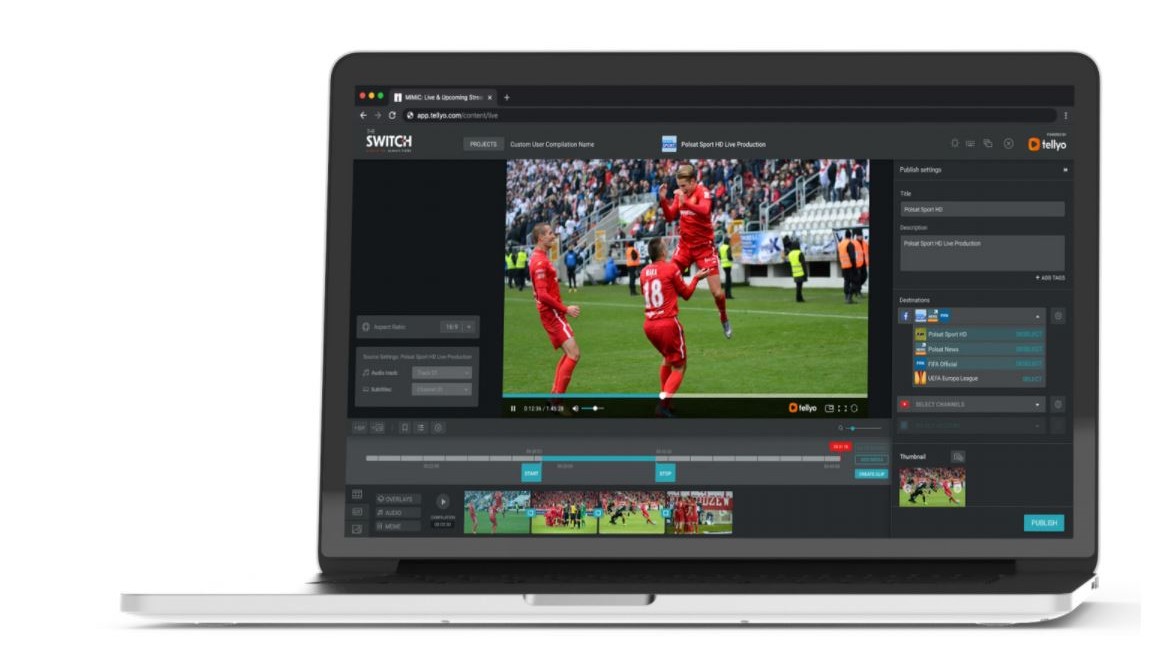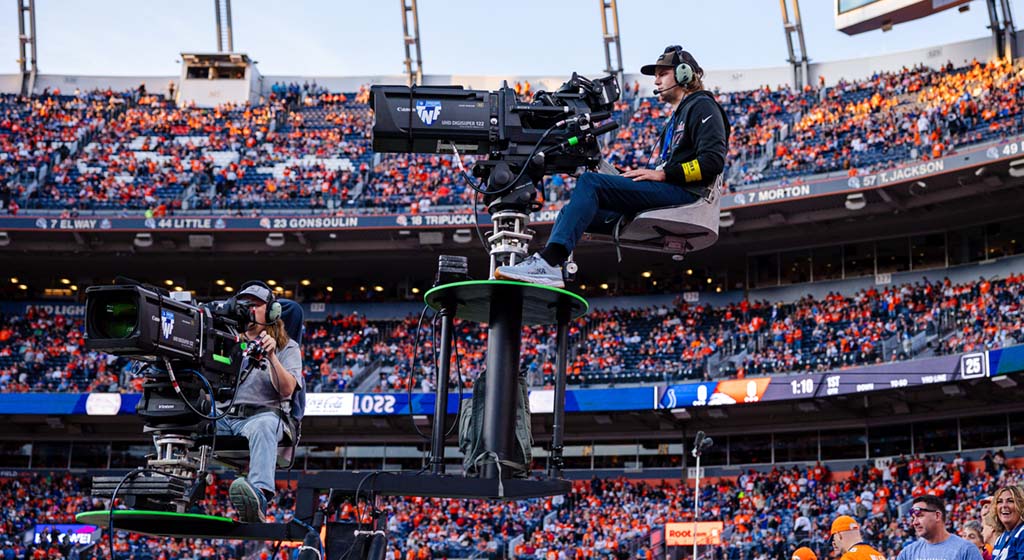Keeping Connected at a Distance
A look at the ongoing shift to more remote and cloud-based production in 2021

The media and entertainment sector has experienced disruption on a level no one could have previously imagined since the COVID-19 pandemic began. It has forced many in the industry—especially those producing live event coverage—to rethink their approach, spurring an incredible drive towards innovation. Many broadcasters and other content producers have, as a result, opened themselves to adopting live production solutions that veered from their accustomed methods; yet were already proven and, critically, are safer than traditional approaches in light of health concerns.
From scheduled sports and awards shows to ad hoc entertainment and enterprise events, live programming has been safely produced and delivered over the past year largely due to the advantages of remote and cloud-based production. What’s more, the industry migration toward these models has raised the bar for the future of live broadcasting and heralded a more permanent shift.
The pandemic has accelerated the trend toward remote methods and the use of cloud technologies and will continue to do so. While the rollout of vaccines globally points toward the return of a more “normal” situation for the industry at some point, ongoing uncertainty and the emergence of new, more transmissible COVID-19 variants will continue to drive the uptake of remote approaches and cloud tools. Rights holders and event producers worldwide are looking to remote production as a means of delivering high-quality coverage while ensuring the health and safety of every person involved, including production crews at every location, the talent and all personnel onsite at an event.
PIONEERING NEW WORKFLOWS FOR LIVE PRODUCTION
The power of remote production was demonstrated by one of the largest and most complex projects in 2020: the move by CBS Sports—supported by The Switch—to use remote production workflow for Golf Channel broadcasts of a series of PGA Golf Tour events, including the [Tour] Championship. The production delivered feeds from 24 cameras and a multitude of audio sources from the site of each tournament, and connected teams from The Switch’s broadcast studios in Burbank, Calif., the CBS facility in Stamford, Conn., and other locations around the United States.

Cloud-based production has also emerged as an invaluable tool for broadcasters, acting as a natural extension of existing remote production capabilities and providing significant benefits. The broadcast of a number of entertainment awards events, such as the livestreamed unveiling of the Grammy nominations last November, have leveraged cloud tools to safely provide and extend coverage. Live production in the cloud is now a tried and tested option that enables every element of the production pipeline—from clipping and editing to graphics creation to comms and talk-back—to be handled in the cloud.
Production crews can use these innovative solutions to operate from anywhere globally—or spread out across an array of locations—working on one platform. This approach also opens up exciting new opportunities for broadcasters and rights holders, such as the ability to instantly produce clips for social media and the rapid production of live shoulder programming, such as pre-game, post-game and highlight shows.
EXPANDING NETWORK CAPACITIES FOR A SAFER FUTURE
While remote and cloud-based production solutions have formed the bedrock of live event broadcasting during the pandemic, it is clear that this model has now demonstrated its efficiency, flexibility and reliability for the long term. The more widespread use of remote and cloud-based production is here to stay.
Get the TV Tech Newsletter
The professional video industry's #1 source for news, trends and product and tech information. Sign up below.
Looking beyond the pandemic, when conference centers, arenas, theatres and other venues are once again safe for crowds to return to, the use of remote and cloud-based production during the crisis has demonstrated its advantages. The potential for substantial cost savings, efficient use of resources and the ability to quickly adapt to any circumstance—regardless of an event’s location, crew members’ whereabouts and the distribution method—will continue to appeal to live content producers.
The nature of remote production, however, involves a considerably higher number of feeds being sent between venues, various production facilities, crew locations and other sites. This means network capacities need to eventually be extended to provide higher-bandwidth capacity. Deploying state-of-the-art connectivity at event locations is critical to allowing the transport of high-quality HD feeds via fibre paths, linking stadiums, arenas and other event venues with production and operations facilities across the globe.
The adoption of new industry standards and the shift to all-IP media workflows is also playing a crucial role in the industry-wide transition to remote and cloud-based production. Entirely IP-based production environments allow the flexible transport of video, audio and data across fibre and internet connectivity, meaning broadcasters can deliver more camera feeds from venues to multiple destinations while also making simultaneous live streams available.
DELIVERING MARQUEE SPORTS AND ENTERTAINMENT EVENTS GLOBALLY
The need for significantly higher connectivity has become clear to the organizers of major sports events being broadcast and livestreamed around the world. Rights holders are already putting in place the infrastructure they need to support remote and cloud-based production for coverage of major events such as tennis tournaments and awards shows.
Tennis Channel for example, tasked The Switch with delivering connectivity for the 2020 French Open. The Switch utilized three dedicated transmit paths between Europe and North America—one created specifically for the tournament—and installed new hardware on-site at Stade Roland Garros. The deployment allowed the transport of high-quality HD feeds via dedicated fibre paths across the Atlantic with SMPTE 2110 hand-off to Tennis Channel’s new production and operations facility in Los Angeles. The project enabled an all IP-based production environment for the first time. The new media workflow permitted the separate transport of high-quality feeds from 17 courts at Roland Garros to Los Angeles.
This type of setup offers the agility and efficiency more broadcasters and other live content providers are looking for to more efficiently deliver feeds in the highest quality—with no compromise on latency—while meeting viewers’ growing expectations.
EQUIPPING THE INDUSTRY
The pandemic has certainly tested the capabilities of broadcasters and rights holders. But at the same time, their ability to adapt and embrace new business models and technologies to overcome fresh challenges has been proven.
With a strong roster of live events set to resume in 2021, the industry needs more remote and cloud-based production to continue to deliver the seamless, quality broadcast of live events amid ongoing uncertainty, and it looks set to build on the use of these methods and technologies long after the pandemic is no longer a major factor.
Robert Szabo-Rowe is the senior vice president of engineering and product management at The Switch.
Robert Szabo – Rowe is the Head of Engineering and Product Management at Tata Comms Media.

